Performance Series at UC San Diego's Qualcomm Institute Enters Fifth Season
New season gets underway Dec. 6 with showcase performance of new opera by UC San Diego playwright Allan Havis and SDSU composer Joseph Waters
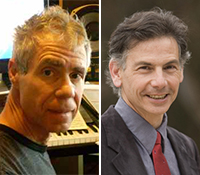
The 2017-2018 season of the Qualcomm Institute’s primary performance series gets underway on December 6 with a performance of St. Francis de los Barrios, a new opera by renowned composer Joseph Waters with a libretto by celebrated playwright Allan Havis.
The Qualcomm Institute (QI) also announced today the other performances and artist residencies awarded by QI’s Initiative for Digital Exploration of Arts and Sciences (IDEAS) following a peer-review competition open to faculty and graduate students in Music, Theatre and Dance and Visual Arts, as well as any engineering discipline.
”We are pleased to announce a schedule of strong and innovative interdisciplinary and experimental pieces for this fifth season of the IDEAS Performance Series,” said Shahrokh Yadegari, a professor of Music at UC San Diego and chair of the IDEAS selection committee. “We were particularly impressed with the number of new works proposed by graduate students collaborating across departmental lines, including one based on an interdisciplinary initiative involving electrical engineering, music, theatre and dance, nanoengineering and materials science.” The program is now in its fifth season.
Wednesday, December 6, 2017 – 7pm – Calit2 Auditorium, Atkinson Hall
St. Francis de los Barrios
by Joseph Waters (composer) and Allan Havis (librettist) with Cynthia Stokes (director)
The new season begins Dec. 6 with a showcase performance of a new opera, St. Francis de los Barrios. Joseph Waters and Allan Havis are, respectively, professors at San Diego State University and UC San Diego. Their work is the first opera commissioned by the San Diego City Opera since its founding in 2015. “The City Opera is a bold and young company,” said UC San Diego theatre professor Havis. “The dramatic material is in that rare subset of contemporary opera pushing boundaries on music and story content, fusion of visual and performance styles, and political commentary.”
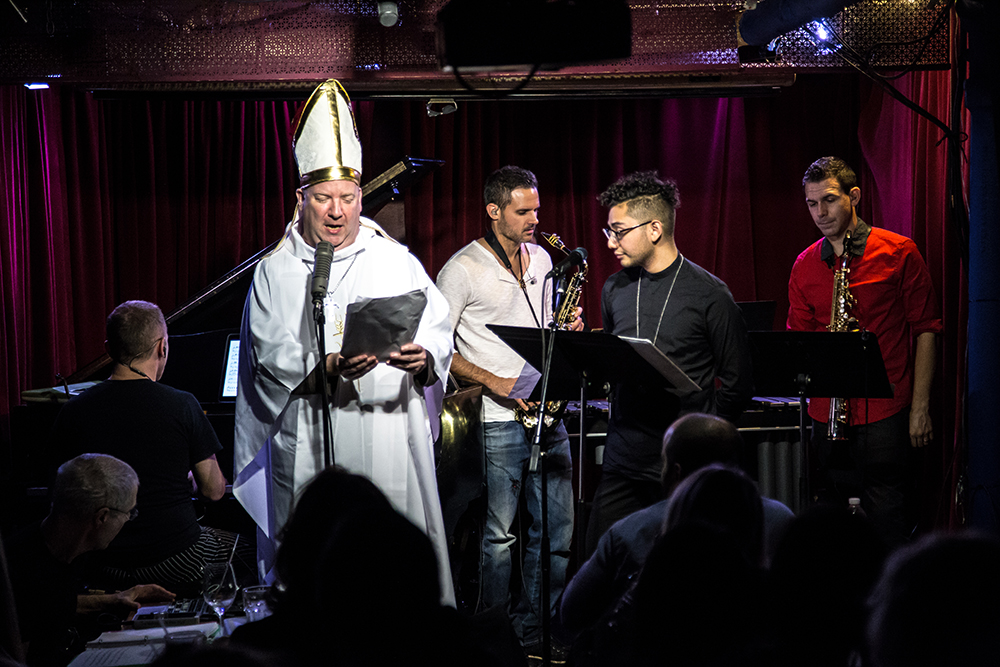
“St. Francis de los Barrios embraces an exciting fusion of pop, folk, and modern-classic musical idioms,” said composer Waters, a professor of music composition at SDSU. Waters previously called the opera “an indie-classical, trans-genre rock opera based on St. Francis of Assisi, set in the present-day Tijuana red light district, Zona Norte, among transgender HIV-afflicted sex workers living in danger and poverty.”
An admixture of musical styles highlight the timeliness of the themes that the opera touches upon, including immigration, religious tolerance, sexual identity, global threats, and the very nature of a multi-billion-dollar wall boondoggle. The story centers on Francis, a charismatic and androgynous young man, squatting in abandoned buildings of Tijuana. Stricken with a terminal disease, Francis has survived by selling his body and illicit drugs. When the opera starts, he has turned his life around from street vagrant to mystic prophet. He has healed the sick, found housing for homeless families, and large images of the Virgin Mary form on the streetscape of any hovel occupied by Francis. Within weeks, his reputation as Saint Francis grows far beyond Mexico’s borders – so much so that his movement is perceived as a threat by Mexican authorities, drug cartels, and even border agents on both sides of the U.S.-Mexico border.
In the Vatican, Pope Francis decides to visit the remarkable young man, triggering alarms in the two bordering nations, already on edge in the turbulent reign of Donald Trump. The internal complication for Saint Francis concerns his complex, past love relationship with Selina, a medico (nurse), who gave birth to their child a year earlier, and Pedro, Francis’s long-time lover.
Starring as young Francis is Rodolfo Girón, a rising young talent on the next-generation music landscape. The role of Pope Francis is sung by baritone Charles Coleman. Behind the scenes, two distinguished alumni of UC San Diego’s Master of Fine Arts (MFA) program, Cynthia Stokes and Robin Roberts, are part of the team mounting the opera showcase at the Qualcomm Institute. Stokes is directing the opera, and Roberts is the set designer.
Thursday, January 25, 2018 – Calit2 Auditorium, Atkinson Hall
Inside the Whale
by Aurora Lagattuta (writer and director) with Maya VanderSchuit (editing and video design) and Zhongran Wang (sound design)
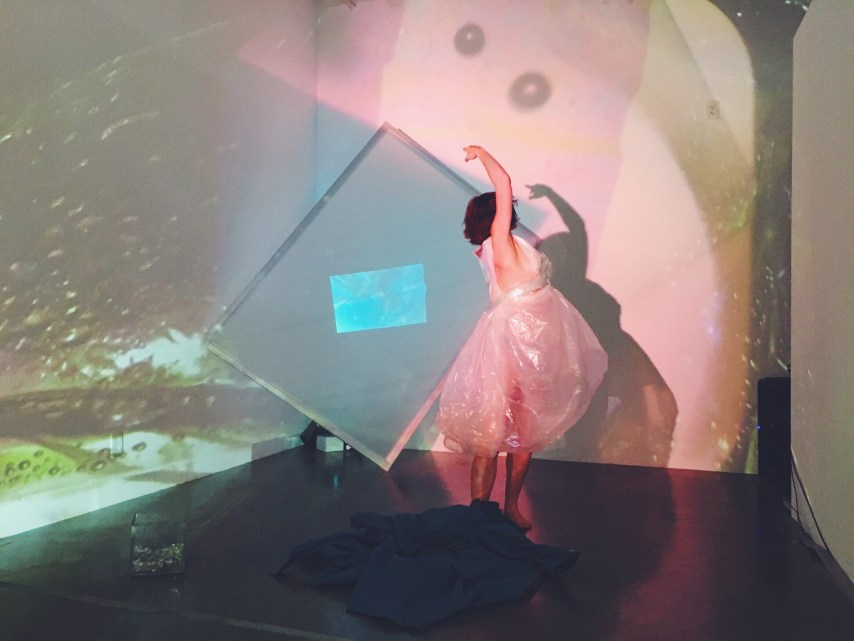
The multi-media, bilingual and solo dance performance tells the tale of a woman swallowed by a whale. Called a “bizarre and beautiful one-woman show” by the Huffington Post, Inside the Whale features the work of creator Aurora Lagattuta, who toured the work across Europe. Lagattuta is a second-year MFA candidate in Contemporary Dance Marking and Performance at UC San Diego, where she received the prestigious San Diego Fellowship. Lagattuta will collaborate with MFA Visual Arts candidate Maya VanderSchuit and first-year MFA Sound Design student Zhongran Wang for the performance.
Inside the Whale addresses issues including body image, interconnected identities, and ocean ecology awareness through a refreshing new voice. “Access to the Qualcomm Institute’s advanced audio-visual facilities will provide the ideal environment to stage this interdisciplinary work,” explained Lagatutta. The dancer recently collaborated on a video-and-dance installation, Benthic Light, which premiered at UC San Diego’s Visual Arts Common Gallery last March. Lagattuta is also no stranger to the Qualcomm Institute IDEAS series: she performed in Yolande Snaith’s Measuring the Dream during the IDEAS 2016-2017 season.
Thursday, February 8, 2018 – Calit2 Theater, Atkinson Hall
Erasure
by Jacob Sundstrom (Ph.D. student in Computer Music) and Anthony Vine (Ph.D. student in Music Composition)
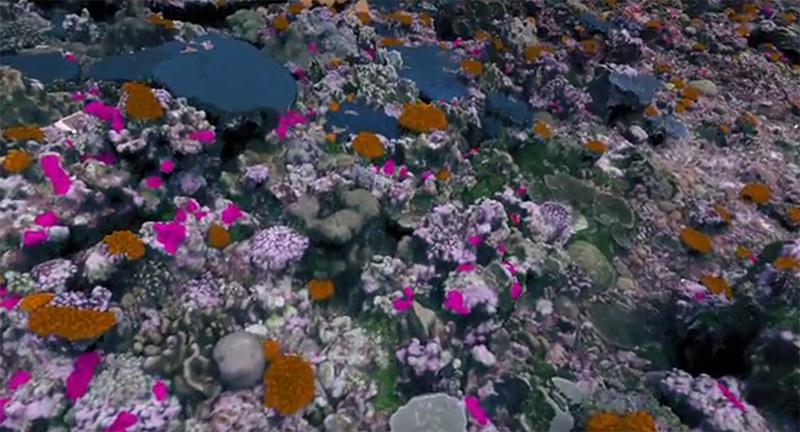
The concept for this immersive visual and sonic installation, Erasure, grew out of a seminar course taught by Music professor Lei Liang, QI’s former Composer in Residence, on the sonification of coral reefs. Graduate students from computer science, engineering and music teamed on a plan to build a large-scale, multimedia installation to highlight the fragility of coral reef ecosystems and human impact on these critical underwater environments.
Through an interconnected network of 3D photomosaic models of coral reefs and spatially and/or electronically processed percussion sounds, a metaphorical ecosystem forms and responds directly to human presence and the temporal history of that presence throughout the work’s existence. As more and more people enter the space, the installation begins to break down: the sonic tapestry of percussion sounds contort and particulate, the synthetic biome of coral visualizations begin to morph into unnatural forms, and the entire system mutates with the presence of the audience. Stepping into this simulacrum of environmental decline, audience members are aesthetically confronted with their impact on these remote and fragile ecosystems.
Thursday, March 15, 2018 – Calit2 Theater, Atkinson Hall
Trapped in the Clouds, Pondering the Night
by Robert Blatt (composer and sound artist) and Jon Paden (MFA in Visual Arts ’17)
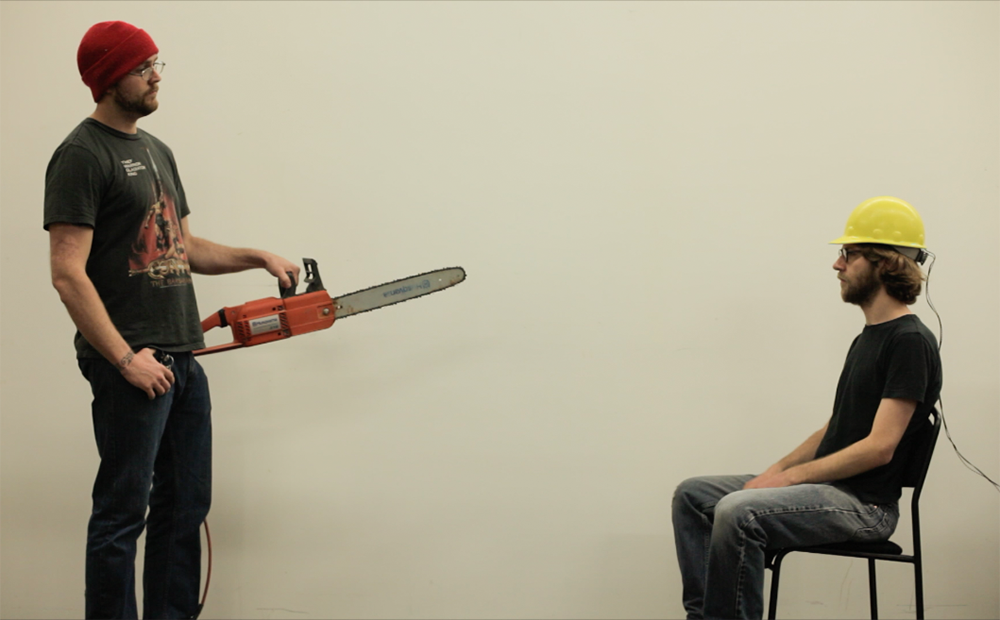
This participative, multimedia work merges computer vision with dynamic audio-visual space to create a self-reflexive, interconnected and temporal sound-vision environment. The work monitors the sky with an ultra-high-definition 4K camera, looking for shifts in the chaos of the clouds and analyzing patterns and changes of hue over the course of the day. The 4K stream can be processed via novel computer-vision algorithmic approaches, using rates of change and the gridded relationship of pixel values within the captured image. This approach translates the outdoor skyscape into an indoor soundscape, and that soundscape shifts as day transitions into night.
The monitored sky is displayed on the Vroom display wall in the Calit2 Theater. Changing sections of the video stream are displayed in conjunction with the soundscape of filtered noise, whose density of band-pass filters, spatial diffusion and filter parameters are altered based on the monitored results of the video display. Trapped in the Clouds… translates the exterior skyspace into a diffuse and reflected audio-visual image. “The image is akin to a reflection pond,” says artist Jon Paden. “Above this pond, visitors have the ability to instrument themselves with electronically modified fishing poles installed at the periphery of the space.” The poles each carry a small microphone, camera, multi-processing sensor and an LED light that are combined and deployed at the end of each ‘fishing line” where the hook should be.
Thursday, April 19, 2018 – Calit2 Theater & Performative Computing Lab, Atkinson Hall
Deep Listening: Rhythms, Vibrations and Voices from the Ross Ice Shelf
by Ash Eliza Smith, Yuka Murakami, Glenn McClure and Peter Bromirski
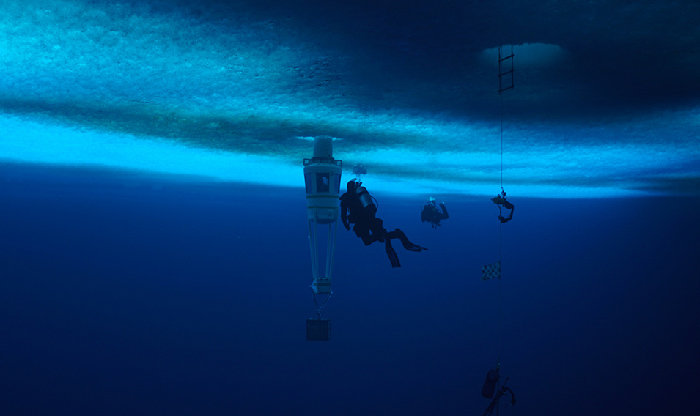
Last winter, composer Glenn McClure joined a 40-day expedition to Antarctica led by Scripps Institution of Oceanography researcher Peter Bromirski. There, they retrieved a series of seismometers that were previously buried in the Ross Ice Shelf, the largest in Antarctica at 500 miles wide. While at the field camp in Antarctica, McClure also made field recordings of environmental sounds (e.g., the sound of footsteps on packed snow), and the sounds will accompany the performance of the converted seismic data.
The IDEAS event at the Qualcomm Institute will include live performance and pre-recorded material generated from the field expedition. The multimedia work’s musical score and audio samples will be accompanied by video and still images for projection during the live performance. This will deepen the public experience of the Ross Ice Shelf and increase the public’s knowledge of the scientific work.
The audio component will feature McClure’s data-driven musical sketches and field recordings which form the foundation of a new orchestral work and musical narrative that transport wave vibrations into frequencies within the range of human hearing.
While McClure works on converting seismic data to symphonic “music in the ice,” collaborators Yuka Murakami and Ash Eliza Smith are designing and directing visual components for the live performance. Murakami develops new-media programs at the Birch Aquarium, where Smith is a Fellow. Smith also directs the Art and Technology program in UC San Diego’s undergraduate Sixth College.
Thursday, May 31, 2018 – Calit2 Theater, Atkinson Hall
Wölflilieder
by Felipe Rossi (Ph.D. candidate in Music Composition) and Johannes Regnier (Ph.D. student in Computer Music) with collaborators including Music professor Stephanie Richards, Anna Robinson (2nd-year MFA in Scenic Design), and new media artist Abe King (an MFA student in Visual Arts).

The title of this work evokes the name of Swiss painter Adolf Wolfli (1864-1930). A team led by UC San Diego Ph.D. candidate in Music Composition, Felipe Rossi, and Computer Music Ph.D. student Johannes Regnier, will mount a large-scale, immersive multi-movement work evoking parallels to the dark themes of the Swiss artist’s oeuvre. Those themes included mental disorder, horror vacui, arcane cosmologies, siin and resurrection, logorrhea, iconophilia, terrae incognitae, tantric mandalas, psychopathologies, paratactic accidents, apotropaic incantations, and so on. Wölfli conceived of himself as a multimedia artist in a way only a schizophrenic could imagine: his drawings were also musical compositions. His multicultural symbols were imbued with sounds, and to the artist, time was reconceived as a unit of space. In modern parlance, his work was a mash-up of hallucinatory representations, ingenious poetry, fiendishly complex musical notation, ingenious mathematics (whole sections consist of only numbers), imaginary travelogues, and webs of keywords. First and foremost, however, came his most imaginative storytelling. For the intricate world he devised, Wolfli created rich images and musical calligraphy. (At times he tried to play the notes on a trumpet made of cardboard.)
The performance will involve live trumpet music with electronics, modular schemes for improvisation, recursive structuring within audio and visual dialogues, interlaced visual elements – including images, texts, movies, and more – and exploration of complex sonic and visual spectra.
Thursday, June 14, 2018 – Calit2 Theater, Atkinson Hall
Untitled
by Elisabet Curbelo González (composer and director) with collaborators Verónica Santiago Moniello (dancer/choreographer), Elliot Patros (spatial audio and sonification), Somayeh Imani (biosensing), and Jayoung Kim (sensors)
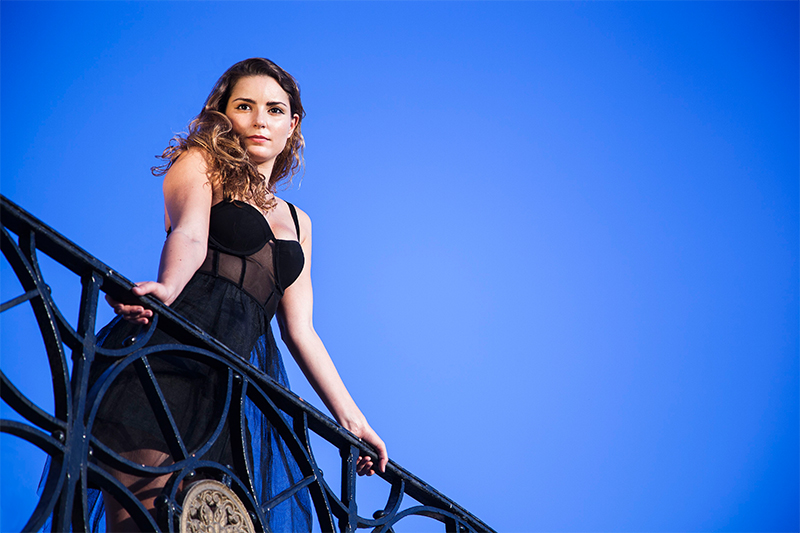
UC San Diego degree in Music Composition.
This live performance is part of Elisabet Curbelo González’s Ph.D. work in Music Composition. The as-yet-untitled piece will feature one or two dancers with sensors, vocalists and a small ensemble of acoustic instruments. The use of a performer’s body movements to control electronic music is not a new concept, but Curbelo has drawn on a small, interdisciplinary team of researchers to push the envelope and base elements of the planned performance on the creation of new sensors just coming out of UC San Diego laboratories. The wearable chemical-electrophysiological hybrid bio-sensing system simultaneously offers real-time monitoring of a biochemical (lactate) and an electro-physiological signal (electrocardiogram) for more comprehensive fitness monitoring than can be achieved with a physical or electro-physiological sensor alone.
The dancer will wear the hybrid biosensor during the performance, along with other sensors that are already on the market (e.g., the Wii remote sensor to monitor gestures, and various fitness trackers). “The sensor marks a significant contribution toward overcoming the trade-off between nonrestrictive form factor and the ability to measure hybrid data sets,” explained Curbelo. “The data will allow us to monitor dancers’ fatigue, while also controlling musical parameters in real time – creating an artistically interesting feedback loop and providing a mature test platform for the sensor.”
Media Contacts
Doug Ramsey, (858) 822-5825, dramsey@ucsd.edu
